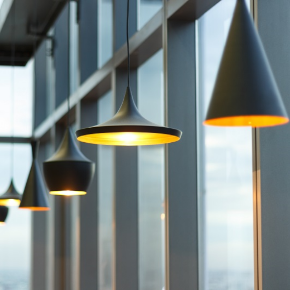Macquarie House Innovation Hub





The year is 1830 in the infant city of Launceston. A three-story Bond Store is built from stone, using timber sawn from nearby to construct the interior. Set in the center of this buzzing new town, the Bond Store is set up to service the city’s eclectic and growing population, with many eager to have a fresh start from a grim past. Serving its purpose to help establish The City of Launceston, the Bond Store was in use for years until its necessity fizzled. The old Bond Store has sat empty and idol for decades, until now.
Story, Provenance and Durability
Launceston City Council has reestablished the city’s iconic building, set to become the new beacon and incubator for fresh ideas in the Apple Isle. With the hopes of attracting tech start-ups from across Australia and beyond to set up shop in Tasmania’s north, the newly dubbed ‘Macquarie House Innovation Hub’ has received a sparkling interior fit-out along with a brand-new addition attached to the original building. Staying true to its Tasmanian roots, Tasmanian timbers were used throughout the building’s revamp. The design was left up to local architectural firm, HBV Architects. Wanting to reflect the timber interior of the original building, HBV chose to externally clad the building’s addition in Hydrowood Celery Top. Chosen for its own unique story, provenance and durability, HBV Director, Paul Cockburn said Hydrowood was the perfect choice.
“We wanted a Tasmanian species and needed something that would be durable and hold up in Launceston’s often unpredictable weather. Celery Top was the answer. We were also familiar with Hydrowood and loved the parallel between the innovation of the Hydrowood story and the ethos of Macquarie House, so we were pleased to use a material that met and exceeded our specifications.” - Paul Cockburn - HBV Architects
High Impact, Low Maintenance
To keep the focus on the original building, HBV wanted to create a timber screen over the addition’s windows, creating the illusion of a seamless timber box. Keeping a natural look to the cladding, an eco-friendly, natural oil coating was chosen to protect the rough sawn Celery Top. Cockburn explains the maintenance of the timber is also simple.
“Celery Top is inherently uniform and ages beautifully, greying with time. The timber doesn’t leak tannins despite coming from the bottom of a lake and will require minimal maintenance. When the screens do need to be cleaned, they are all built on hinges and can easily be removed. Veterans in the industry and known for their work on heritage buildings and adaptive reuse projects HBV was proud to add this project to their list of works. We’re always inspired by the opportunities that arise from the brief that you’re given and this project was abundant with them. We took advantage of telling a uniquely Tasmanian story with the choice of Hydrowood and the result is brilliant.”








